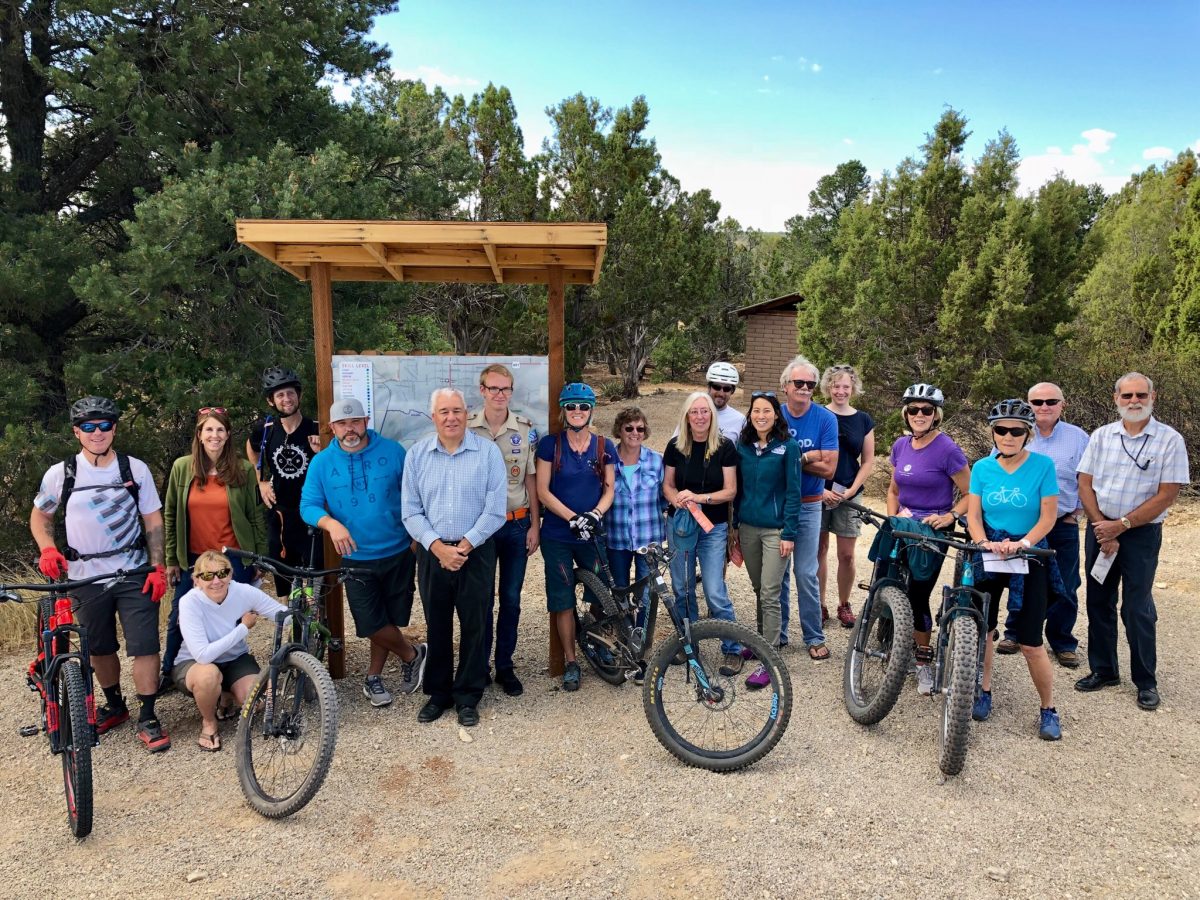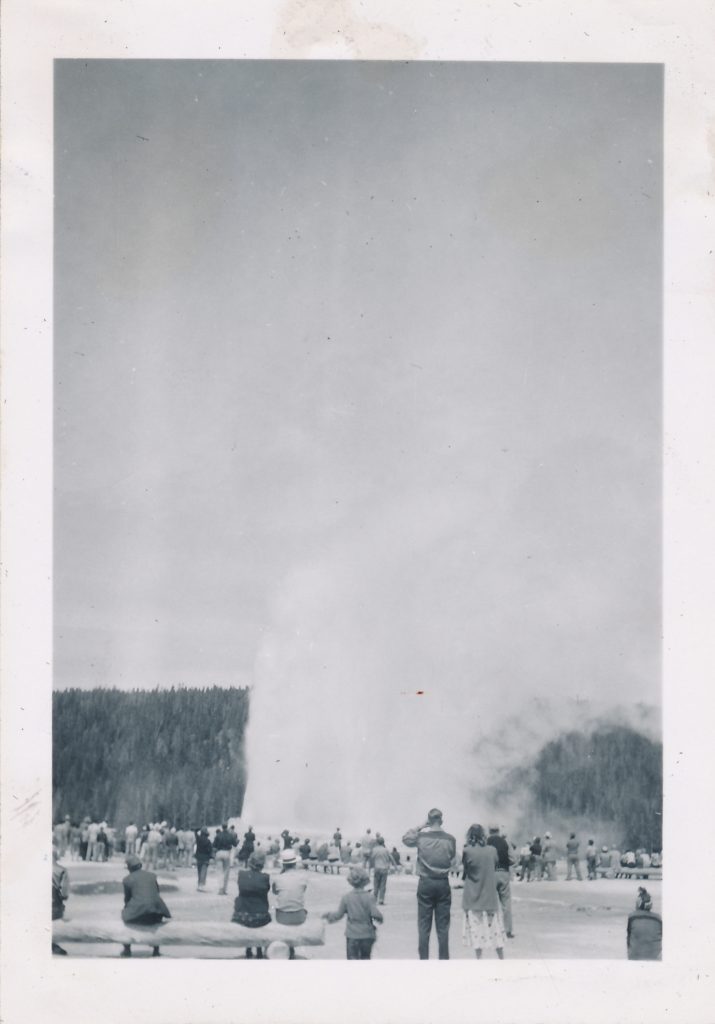In Utah, the sprawling deserts, snow-capped peaks and towering plateaus that make up the state’s unique geography are eclipsed only by its people’s appreciation and enthusiasm for the outdoors. Surrounded by what is 70 percent publicly owned land, it’s no wonder that outdoor recreation is the backbone of Utah’s economy and the driving force behind many of its communities’ success.
It’s unimportant whether the creation of Utah’s Office of Outdoor Recreation in 2013 — the first of its kind in the country (though, many more states quickly followed suit) — was in reaction to or helped spur the growth of Utah’s $12.3 billion outdoor recreation economy; it’s likely a little of both. In the seven years since its inception, the office — created to help ensure the “state’s natural assets can sustain economic growth for years to come,” according to its website — has already had a lasting impact on the state’s outdoor recreation community.
The best example of the office’s reach is the Utah Outdoor Recreation Grant.
Created to help communities around the state fund outdoor recreation infrastructure to help drive tourism, the grant has demonstrated what’s possible when legislative backing meets the public’s will. Funded in its early years by $1 million, allocated by the governor, the program has since received a significant boost.
“Legislators saw that and said, ‘You know what, $1 million isn’t enough,’ and they came back with the transient room tax, which funds us at, on average, $5 million a year; we get basically 32 cents for every $100 spent in a hotel room,” says Tom Adams, former director of the Utah Office of Outdoor Recreation. (Adams left his position in January 2020 to become Petzl North America’s COO.)
“We want to know that we’re giving Utah dollars back to Utah businesses. First and foremost, the mission of our office is to ensure that Utahns can live a healthy, active lifestyle through recreation, and many of the projects we do hit residents first.”
Any initial concern expressed by hoteliers was quickly quashed.
“Many of those folks who might have been in question originally recognized that the infrastructure we were building quite often gives their customers more reason to stick around and have a better time — and come back,” Adams says.
Over the last five years, the Outdoor Recreation Grant program has invested approximately $10 million into 155 projects statewide. As time has gone on, the office has been able to devote even more resources toward the program; in 2019 alone, it awarded $4.3 million to 55 infrastructure projects, with grants ranging from $1,350 to $150,000.
County and tribal governments, municipalities and nonprofit organizations that meet Utah code requirements are all eligible to apply. However, the most important criteria, Adams says, is that applicants be based in Utah and that the project directly benefits Utahns.
“We want to know that we’re giving Utah dollars back to Utah businesses,” he says. “First and foremost, the mission of our office is to ensure that Utahns can live a healthy, active lifestyle through recreation, and many of the projects we do hit residents first. They’re there for residents, to get them outside — ideally, to … break down socioeconomic barriers and get people out.”
Applicants must also demonstrate that they — and their communities — are committed to these projects as well. This is achieved through the grant’s 50-50 match, which requires that awardees fund at least half of their infrastructure proposal.

“We want to know that the communities that need this money are vested in the project as well,” says Adams. “It’s not just taking a handout but rather them coming to us with a project that they believe will be of value to their community, and we’re just a partner in the process.”
Often, the Office of Outdoor Recreation plays an even smaller role, giving grantees that last little push to make it over the finish line.
“The reality of it is, we typically are matching 8-to-1, where we’re just the one, because by the time they come to us, they know they’re doing this. I always joke that they’ve raised funds from bake sales to federal grants — and that’s really true,” Adams says. “We’re typically funding pretty large projects, some of them 30-to-1, so we’re just a piece of the pie.”
The infrastructure grants are evaluated for a handful of factors: project schedule and readiness (it must be completed within 24 months), community need, budget and costs, potential for beneficial economic impacts, recreation value and improved physical and recreational access. Proposals don’t have to have a perfect score in every bucket, Adams notes, but those that at least hit each one have a better chance of receiving the grant.
“We wanted to make sure that we’re not only an economic driver but that we’re also [improving the] quality of life for lots of different user groups,” he says. “So, if you’re going to have an economic impact on your community, you’re going to improve quality of life, you might be ADA accessible or cater to youth. Those, we feel, make some of the best projects and have the best impact.”
In 2020, award amounts range from $1,000 to $150,000 — with two additional grants of half a million dollars each for larger projects, which will require a 4-to-1 match. Applications for 2020 grants are open until March 20. This funding is specifically designed for “shiny, new things,” Adams says, and in the past, the program has funded the construction of new hiking and mountain biking trails (or additions to existing trail systems), campsites, boat ramps, multi-use paved paths and much more.
“If we’re all honest with ourselves, the federal government should be paying for these projects on federal lands, but Utah being a state that’s comprised of 70 percent federal lands, our backyards are our federal lands.”
In addition to funding new projects, this year, the Office of Outdoor Recreation has set aside $1.5 million of the grant to go toward the rehabilitation of existing infrastructure through the Recreation Restoration Infrastructure Grant — what Adams calls “a grant within a grant.”
While the vast majority of the funds go to city and county lands, every year, nearly 20 percent are awarded to cover the costs of projects on federal lands. These grant monies must be awarded to a Utah-based entity that partners with the U.S. Forest Service, Bureau of Land Management or the National Park Service on a proposal, as opposed to going directly to the federal agency.
That the state is paying for recreation projects on federal land has been a hard pill for some to swallow, but it’s a prospect that the Office of Outdoor Recreation has been open to, understanding the budgetary challenges these agencies are facing.
“If we’re all honest with ourselves, the federal government should be paying for these projects on federal lands, but Utah being a state that’s comprised of 70 percent federal lands, our backyards are our federal lands,” says Adams. “We don’t want to let them fall into disrepair for our own quality of life as well as people coming here to visit.”
Blueprints for Success
Both the environmental and economic impacts of the Outdoor Recreation Grant and the infrastructure it’s supporting are long term, Adams says — perhaps most importantly, preventing the development of the land where these projects are taking place.

“That whole area gets conserved for that recreation purpose, and every land manager signs at least a 10-year agreement saying that the project will be open to the public and virtually free — if not free — and that nothing will interrupt what happens there,” Adams explains.
The program’s success has not surprisingly contributed to its becoming the envy of other states hoping to re-create it in their area of the country. Adams has presented before the National Governors Association’s Outdoor Recreation Learning Network, advising others on how Utah’s grant works and how it can be replicated.
“As I tell every single state, ‘Look at our example, celebrate our success and use it as leverage for [your] state.’ We’re all looking for ways to improve on quality of life but also to partner and capitalize on an $887 billion industry, and those tools can help get the creative juices flowing,” he says. “We want to see this grow in every state.”
Out among the red rock canyons, snow-capped peaks and towering plateaus is where the most enduring effects of this effort can be witnessed, as the next generation of Utahns develop their own lifelong appreciation and enthusiasm for the outdoors. One example of this, Adams cites, is the creation of a trail system often used by local high school students for mountain bike races.
“Biking is a lifetime sport; it’s not tackle football,” he notes. “Most of us aren’t going to be able to play pro ball, but we’re going to be able to ride our bikes on world-class trails our whole life if we want to.”





